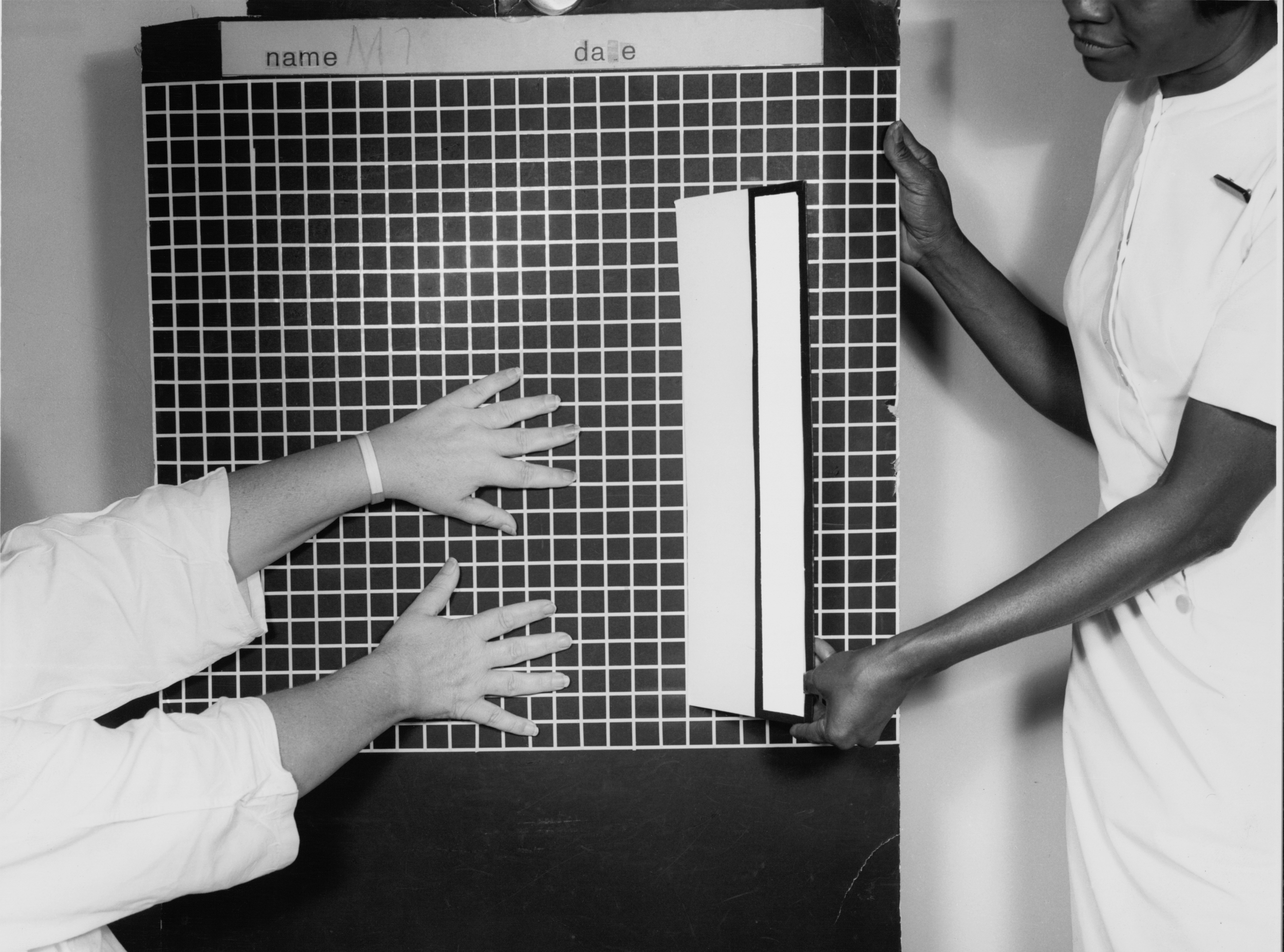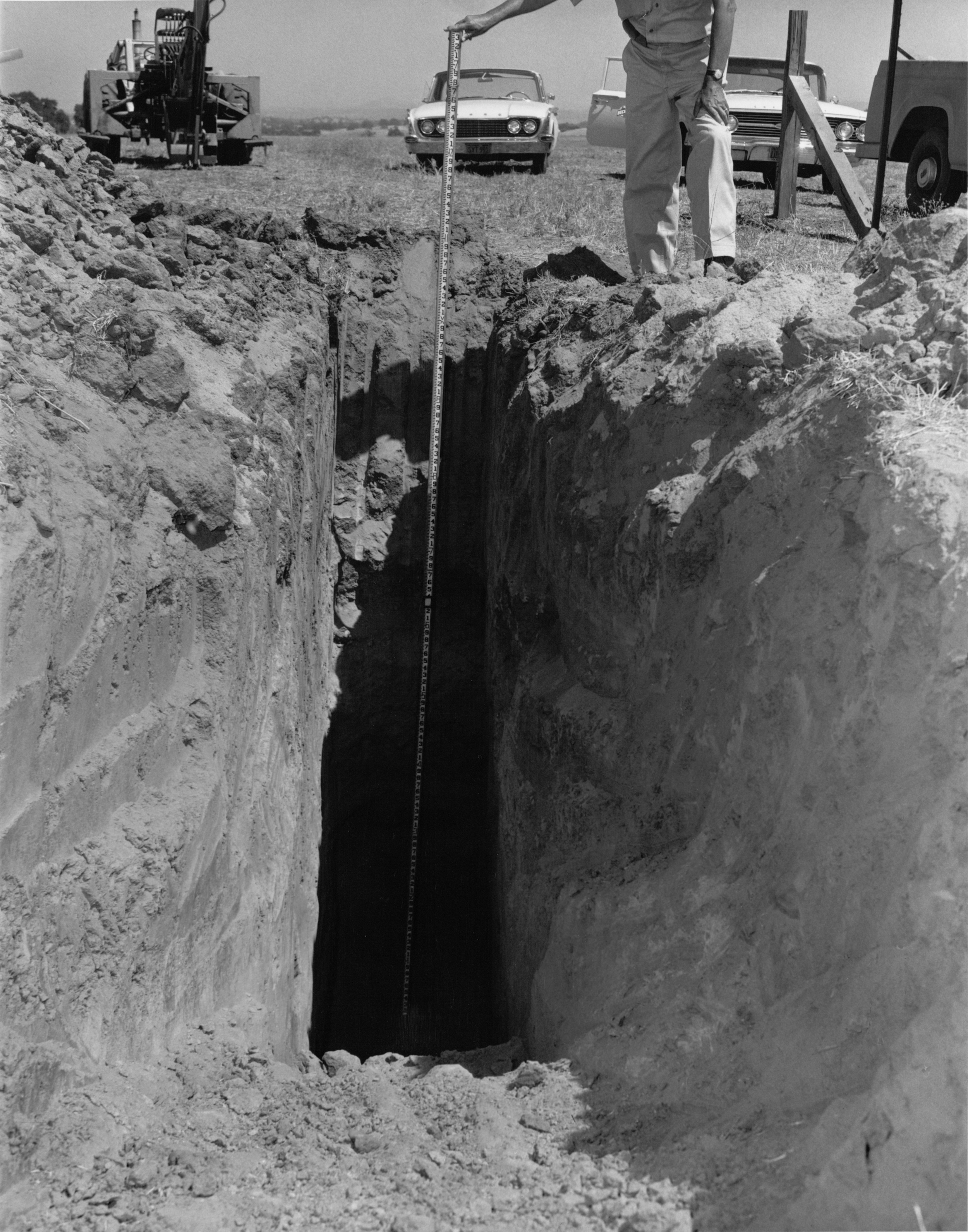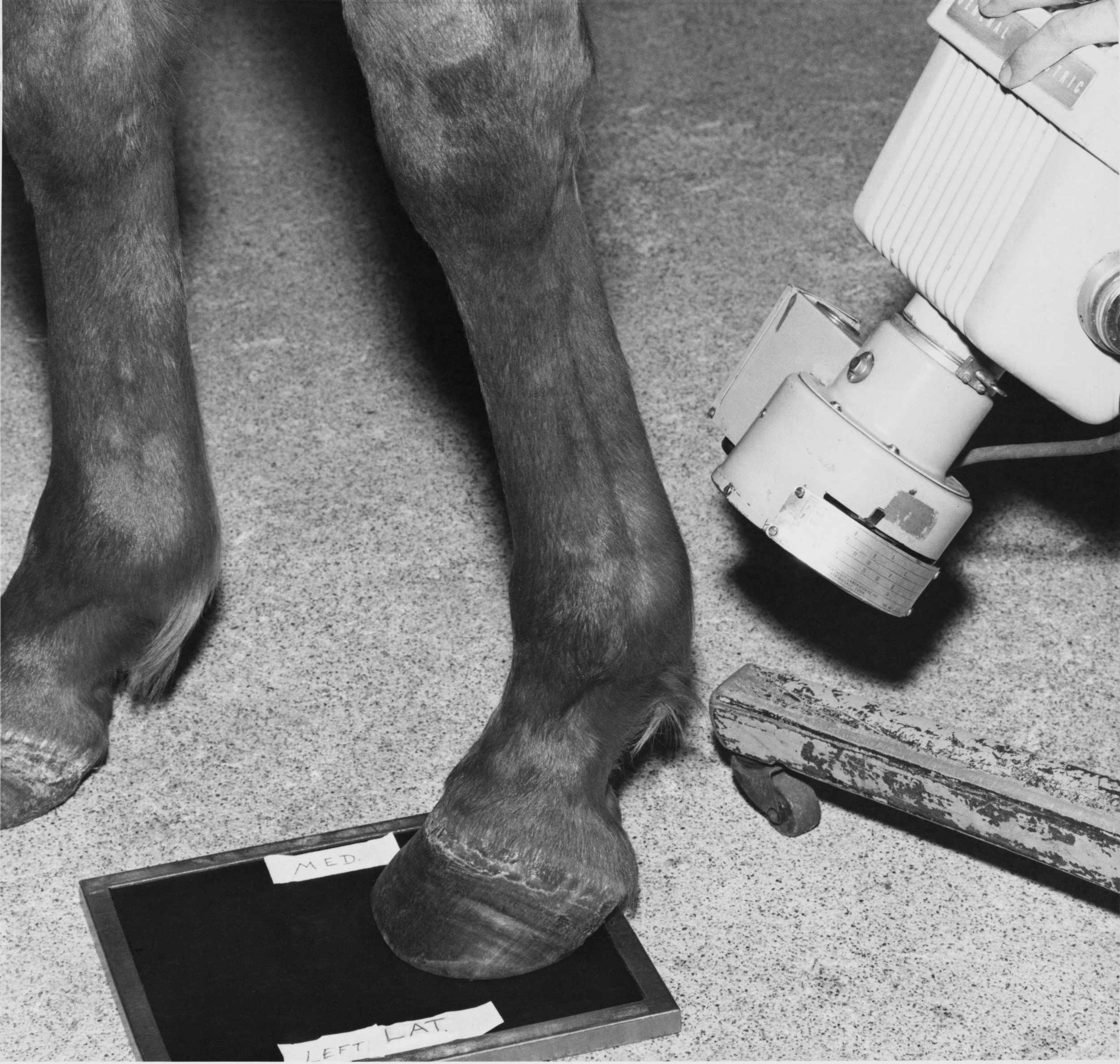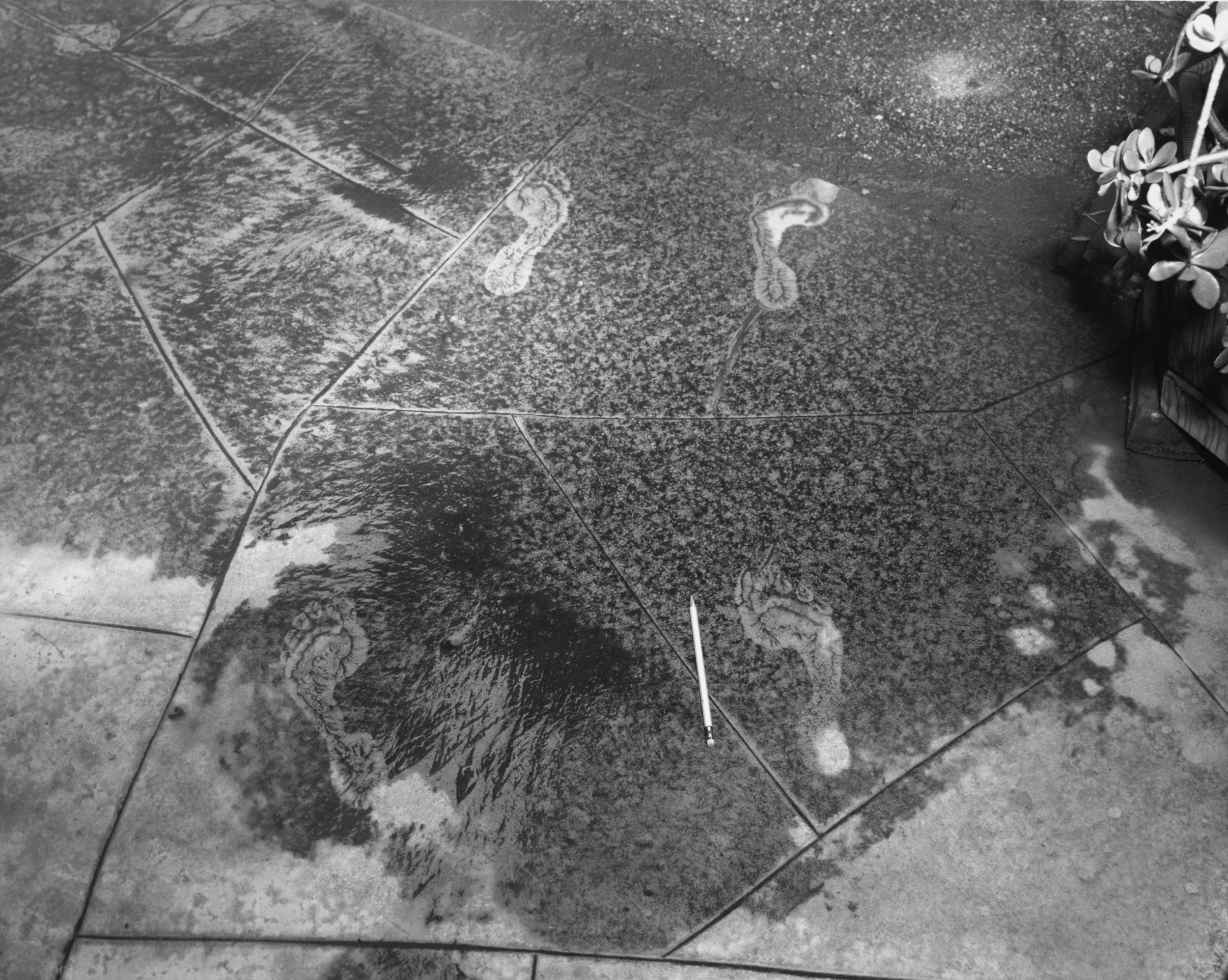In 1977, two young artists living in the San Francisco Bay Area, both recently out of art school, published a book of photographs they had found in the files of local corporations, government agencies, and research institutions. Somehow, through a combination of innocence and bravado, the two persuaded the guardians of those files, who were perhaps, in retrospect, even more innocent, to let the visitors in and not only see what was there but take some of it away with them—often for free. In many cases, these keepers of publicity shots and librarians of research files were persuaded not only by the seriousness of the two men, but by a letter on government stationery stating that they had received government funds to pursue a research project and would be granted an exhibition at an honorable museum where the materials they found would be displayed. They called this book and its accompanying show Evidence.
Today we are more accustomed to seeing pictures plucked from their original context and put on the wall of a museum or published as objects of artistic value, all without identifying or instructional text. At the time Evidence was published, however, such a decontextualized presentation of photography, especially photographs made for the purpose of record, was a new phenomenon and directed toward a still relatively tiny audience—those interested in photography as a kind of art. Yet the book proved to be a modest bombshell. It was elusive and poetic, it needed the viewer’s active thought and engagement, it was not strictly speaking political, in those most political of times, and it was a challenge to those who thought they knew what art photographs looked like. Thanks to a renewed interest in conceptualism, and now also a regard for photography’s central role in contemporary art, this modest book now seems premonitory rather than dated or quaint. Its republication is a tribute to the continued resonance of these pictures.
Evidence was a genuine and creative reflection of the two people who conceived of it and put it together. Both Larry Sultan and Mike Mandel—almost contemporaries (Sultan was born in 1946, Mandel in 1950)—were raised in Southern California’s San Fernando Valley, a burgeoning postwar suburban flatland where their respective sets of parents moved, determined to experience the golden land of sunshine and opportunity. By 1960, Los Angeles had superceded Chicago to become the nation’s second most populous urban center. The film industry provided the city with its indigenous culture, and this local preoccupation with fantasy encouraged a particular artistic climate. Movies and billboards were its folk art. Some, referring to the city as a cultural desert, might imagine a more fertile soil for young artists. In this case, however, Los Angeles provided Mandel and Sultan with a little history and great freedom.
The two met as graduate students in photography, when both had come north to attend the San Francisco Art Institute. They elected to come for different reasons: for Sultan it was a chance to connect with the heritage of the Beat generation and escape the art-school experience he had at the Rhode Island School of Design; for Mandel it was far enough away from home to feel really separate from familiar territory but not so far as to be really distant. Both men had backgrounds in political science before becoming artists, a commonality important to their friendship. They became collaborators because they both felt the art world in San Francisco was limited and wanted to challenge it. The collaboration suited their temperaments: Mandel’s analytic personality responded to the more private and literary Sultan. They provoked each other in fruitful ways and together formed a kind of special armature with which they tackled the photographic conceits of the place and period in which they were living. Coming to San Francisco represented a cultural conflict Mandel and Sultan only later understood, but it clarified and enlarged their work. It unified them against what they considered an outdated café society where photography was accepted as a form of aesthetic self-expression and where the idea that photographs had a role in understanding the world seemed foreign.
Mandel and Sultan found the local offices of NASA and the Ames Research Center at Moffett Field, in nearby Sunnyvale, and though they were interested in the expected beautiful pictures of space coming in across the wires, they were fascinated by the chaotic, marvelous, mournful, and funny pictures of people engulfed by a new technology no one could understand but experts. Pictures about photography were also housed there—pictures, for instance, of family snapshots left on the moon, which interested the artists. Engaged by these discoveries, they explored the enormous resources nearby. The Jet Propulsion Lab, TRW, General Atomic, and the ambitious research laboratories at Stanford were seen as poetic sources for the kind of picture they were impelled to find. And the places had literally thousands—even hundreds of thousands—of pictures to explore. Moreover, they realized that with the recent changeover to thirty-five-millimeter documentation, the older and more formal 4 x 5s, made in black-and-white and illuminated by flash, possessed an archaic, deliberate, crafted quality that intrigued them. Besides their inherent elegance and quirkiness, the two felt that this almost archaic formality could give better clues to the future through the language of the past. Evidence, therefore, is a post-Vietnam, post-Watergate work of art, one that engages the loss of belief provoked by that era and an examination of the resulting ambivalent relationship of people to the new machines.
In 1973, Mandel and Sultan began to work together, first on open-ended, allusive billboards, where words and appropriated drawings were conjoined without apparent meaning. In 1975, the pair were awarded a grant from the National Endowment for the Arts to investigate the files of government, science, and industry, and to publish a book of what they found. Armed with an official letter, which enabled them to do some immediate research in the files of local institutions, they approached John Humphrey, the curator of photography at the San Francisco Museum of Modern Art (SFMoMA), and persuaded him of the project’s value. He offered them a show at the museum. They also proposed Humphrey a wager, for a good bottle of scotch, to see if he could detect an “evidence” type of picture they would make themselves and slip into the show—a bet he won. As the project progressed, they broadened their research horizons and included visits to institutions and organizations in Los Angeles and eventually Washington, D.C., as a way of ensuring that what they saw was not only a local phenomenon.
The pictures Mandel and Sultan chose for the show extend those in the book. Like it, they are uproariously funny and desperately sad, and while the subjects vary widely, the photographs they retained for both have a kind of melancholic and bizarre resonance. But the book is more tightly considered and has a clear narrative, one that they derived from the evidence within the pictures themselves. The transitions are subtle, not directorial, because comparisons or linkages are made at the turn of the page rather than on facing pages. And there is no obvious clue to the book’s meaning except in the pictures, their order, and the introductory list of all the offices and agencies from whence the pictures came. The shape of the book, its cover, and the choice of typography all indicate a kind of legal authority and detachment, as though to assure the reader that the perpetrators are speaking the language of truth, which documentary photography is reputed to represent.
Thus structured into a kind of narrative, the photographs describe first a world of human traces: dusty or possibly bloody footprints on a patio floor; a handprint at a crime site; and a picture of a photograph, damaged and bleached by an apparent fire and abandoned on a chair. Then there are the parts of people: a man’s lower body, standing as though in a police lineup; a gloved hand holding up a rope like a noose; a man standing in water holding a sheet of white paper behind a stand of growing rice; and, most pathetic (or hilarious), a man standing dolefully in his underwear, apparently wired to a clock and a nearby cabinet. As the story proceeds, we see the increasing inclusion of objects for measuring and observing: a ruler, a pencil for scale, an intrusive focusing lens, gridded panels. Gradually, we notice a consciousness of space or spaciousness in the pictures—most of them were made in the West, after all—that also conveys a certain sterile hollowness, a sense of urgency, of intense attention to strange detail, of anxiety only slightly mollified by busy attention. Nature, when it appears, is contained, sanitized, measured, observed, and usually distanced from contamination by humans. Often the humans in nature look awkward and ill at ease, as in the picture of suited, bespectacled men clustered in back of a boulder, one at a lectern, holding forth. One of the scariest pictures shows another group of suited men striding, with walkie-talkies, over the crest of a hill, as though they control the universe.
These pictures of men entrapped or commanding technology, assuming they have the upper hand, form the core, the tragic motif of the book. Men enclosed in a box, pruning, climbing on, and attending to a caged tree; a corporate-looking man seen from behind, his impassive hand lingering at a control panel, facing a window shot with flash; and one of the most eerie, the shaved head, arm, and vulnerable ear of a monkey held in the tight grip of an enormous leather glove, his face thrust into a leather pouch—all of these pictures are central, key to understanding the book’s essential meaning. What sprouts naturally in this universe are tangles of wires, as choking as crabgrass or the kudzu vines that grow in the American South, and the strange mushroomlike forms of plastic foam that evolve and expand most likely in the dark. Some also possess a kind of disconcerting beauty: toward the end of the book we discover an alluring, mysterious, glowing aeronautical body, a mystical presence in white worshipped by its attendant workers. Large and then small scattered explosions and traces of apocalyptic fire follow, and the last pictures show evidence of disorder, fragmentation, and a man struggling to escape.
Evidence is not a strictly political book—it is not a critique; the narrative is imposed on it by the two who selected and sequenced the pictures. It is not a postmodern production. Mandel and Sultan considered the pictures found objects, fully within the tradition of Duchamp’s suspended snow shovel (ironically entitled In Advance of a Broken Arm) and Man Ray’s mute and vicious iron with carpet tacks glued to its flat surface. As the artists explained in the press release for the San Francisco exhibition, “By definition these found objects are records and by implication they are cultural artifacts. This is a … poetic exploration upon the restructuring of imagery.”
Taken out of their original context and placed in a narrative formed from the internal logic found within the pictures themselves, these mute images provided a wealth of archaeological clues about the kind of society that produced them. But the narrative is allusive and open-ended; it does not have a real text or political narrative. The book is rather like the experience of the 1966 Antonioni film Blow-Up (which fascinated Sultan): the closer the photographer gets, the more he enlarges the details of the picture; the less he sees, the more it becomes purely paper, the more disconcerting his relationship to the photograph finally is. All the wealth of information the photographs in Evidence provide, disrupted from their original context and placed into an intuitive visual essay about the ridiculousness of vanity and the pathetic loss of power, makes the pictures themselves essentially unknowable and inscrutable, and more strange and potent for it.
The extraction of photographs from their original contexts has taken other avenues than poetry since Evidence was compiled. In the work of Richard Prince and many other postmodernists, photographic materials, particularly from the realm of advertising, have been restructured to reveal the commodity culture we inhabit. Similarly, Sherrie Levine’s act of appropriating Walker Evans’s pictures, originally made for the Farm Security Administration in the 1930s and intended as pictures of rural poverty that would elicit awareness and support for government-aid programs, underlined their current status as objects of culture. But decontextualization or recontextualization also leads, in a curious way, to a reawakened sensitivity to context, to seeing beautiful pictures within the archive and admiring their strange forcefulness. Recently, there has been an interest in seeing evidentiary photography, such as police pictures made as evidence in court, aesthetically, a phenomenon probably linked to reality TV and a certain anxiety about reality itself. Photographs of early twentieth-century murders in New York City, published in a book also called Evidence, are pictures of social phenomena, compelling and beautiful. Because of their fascinated regard for violent death, this later volume is really about rapture, the mysterious sacredness of life, and provides another kind of acknowledgement of photography’s power.
The makers of Evidence have certainly given permission to others to examine the archive in search of the aesthetic. The picture books produced by Carole Kismaric and Marvin Heiferman, for instance, delve into the anonymous photographic file with subtle and innovative results. They assure us that making photographs is not the only, or perhaps even the major issue provoked by the medium, and that understanding how photography is used can also be integrated into its meaning. As much as the photographs in Evidence represent the notion of a helpless entrapment by forces—usually unseen or unknowable—that are beyond our power to comprehend or direct, they also reflect a much larger discussion and concern with our culture. In much of the great, serious photographic work of the last thirty years—not only in “found” photographic artifacts like Evidence but in pictures seen and made about our environment by photographers from Lewis Baltz to Robert Adams—reverberate the shared knowledge that we are fragile, that nature is as endangered as we are, and that the future of our culture as we know it is at stake.
This essay is adapted from the afterword in a reissue of Evidence by D.A.P. Reprinted with permission.
Sandra S. Phillips is curator emeritus of SFMOMA.

























